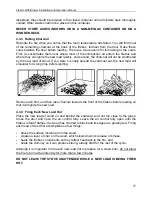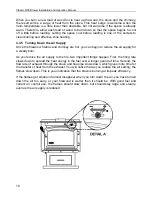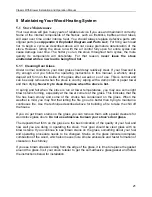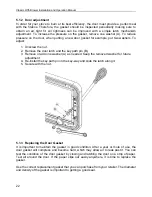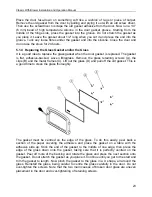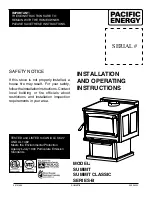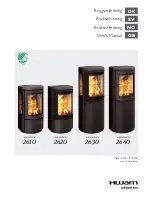
Classic With Blower Installation and Operation Manual
8
2.2
Zone Heating and How to Make it Work for You
Your new Classic with blower wood stove is a space heater, which means it is intended to
heat the area it is installed in, as well as spaces that connect to that area, although to a
lower temperature. This is called zone heating and it is an increasingly popular way to heat
homes or spaces within homes.
Zone heating can be used to supplement another heating system by heating a particular
space within a home, such as a basement family room or an addition that lacks another
heat source.
Houses of moderate size and relatively new construction can be heated with a properly
sized and located wood stove. Whole house zone heating works best when the stove is
located in the part of the house where the family spends most of its time. This is normally
the main living area where the kitchen, dining and living rooms are located. By locating the
stove in this area, you will get the maximum benefit of the heat it produces and will achieve
the highest possible heating efficiency and comfort. The space where you spend most of
your time will be warmest, while bedrooms and basement (if there is one) will stay cooler.
In this way, you will burn less wood than with other forms of heating.
Although the stove may be able to heat the main living areas of your house to an adequate
temperature, we strongly recommend that you also have a conventional oil, gas or electric
heating system to provide backup heating.
Your success with zone heating will depend on several factors, including the correct sizing
and location of the stove, the size, layout and age of your home and your climate zone.
Three-season vacation homes can usually be heated with smaller stoves than houses that
are heated all winter.
2.3
The Benefits of Low Emissions and High Efficiency
The low smoke emissions produced by the special features inside the Classic with blower
firebox mean that your household will release up to 90 percent less smoke into the outside
environment than if you used an older conventional stove. But there is more to the
emission control technologies than protecting the environment.
The smoke released from wood when it is heated contains about half of the energy content
of the fuel. By burning the wood completely, your stove releases all the heat energy from
the wood instead of wasting it as smoke up the chimney. Also, the features inside the
firebox allow you to reduce the air supply to control heat output, while maintaining clean
and efficient flaming combustion, which boosts the efficient delivery of heat to your home.
The emission control and advanced combustion features of your stove can only work
properly if your fuel is in the correct moisture content range of 15 to 20 percent. See
Section A3.0 of this manual for suggestions on preparing fuelwood and judging its
moisture.

















